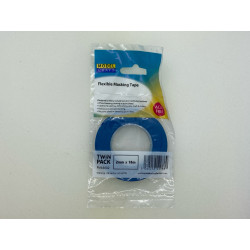Thomas the Tank Engine is a beloved British children's character who originated in a series of books titled The...
No products
Product successfully added to your shopping cart
There are 0 items in your cart. There is 1 item in your cart.
Search Tips
Christmas and New Year
We are dispatching orders every weekday apart from Christmas Day, Boxing Day and New Year's Day.
If you order is time critical, select next day delivery at checkout.
The shop in Sandown is closed from 25th December, reopening on 30th December.
Do I need to protect the painted surfaces of my model with a varnish before applying masking tape?
It is generally recommended to protect painted surfaces with a varnish before applying masking tape. This extra step helps to prevent the tape from lifting or damaging the paint when it is removed.
Applying a varnish layer over the painted surface provides a protective barrier. It helps seal the paint and creates a smoother surface for the masking tape to adhere to. This reduces the risk of the tape pulling off the paint or leaving adhesive residue behind. Additionally, the smooth surface should ensure that the masking tape has good contact with the surface which in turn will help avoid subsequent paint layers from bleeding underneath.
When choosing a varnish, opt for a clear, matte, or satin finish to avoid altering the appearance of the paintwork. Gloss varnishes may create a shiny or reflective surface, which may not be desired depending on the model's finish.
Allow the varnish to fully cure before applying masking tape. Follow the instructions provided by the varnish manufacturer regarding drying times. Once the varnish has cured, you can confidently apply the masking tape without worrying about damaging the painted surfaces.
Remember to use low-tack or delicate surface masking tape to minimise the risk of lifting or damaging the varnish and underlying paint. Additionally, when removing the masking tape, do so carefully and at a shallow angle to avoid any potential paint or varnish damage.
Taking these precautions will help ensure clean and precise masking lines without compromising the painted surfaces of the subject model.
Click here to receive the tips weekly in your mailbox. You can unsubscribe at any time.










